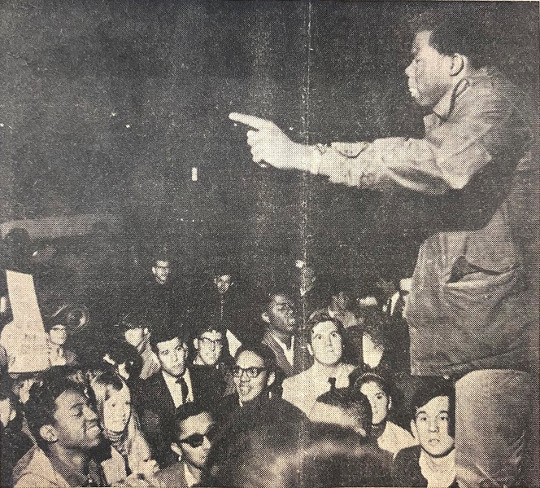Pioneering Black History: George Wallace Riot
Out of all the events that occurred during Bennett’s four years at Dartmouth, the George Wallace Riot was by far the most memorable.
George Wallace was the former governor of Alabama and he was known as an outspoken defender of racial segregation. In his 1963 inauguration as governor when he stood on a spot in the state capitol and shouted: "Segregation now! Segregation tomorrow! Segregation forever!". At the time that he was speaking at Dartmouth, he had gained support from racist whites in the north who were also opposed to the civil rights movement.
Bennett was one of ten students who helped organize the protest against George Wallace’s visit. Black students shouted “Wallace is racist” while Wallace was speaking. This caused the white audience members to counter them and it started an uproar. Wallace needed assistance from the police to get into the car and leave.
In the interview, Bennett mentioned how angry he felt and how he spontaneously almost jumped on the stage while George Wallace was speaking, but had stopped himself because he noticed a security guard put his hands on his gun. While listening to him explain what happened, I could feel myself being in his shoes—the heart racing from the near-death experience of almost getting shot by the police officer and the adrenaline coming from living in a historic event that would be broadcast all over the nation.
“and there I was in front of the podium about to climb onto the stage and I remember an Alabama state trooper putting his hand on his weapon, his gun.”
Post Protest
Eddie Cole is the author of The Campus Color Line: College Presidents and the Struggle for Black Freedom. This book focuses on the period between 1948 and 1968 and how college presidents initiated and shaped racial policies and practices during a time of violence and chaos. The book presents seven different case studies of campus presidents dealing with the civil rights movement and the culture war taking place on campus. Cole’s book highlights the stuggles that Black students endured during that time period — from segregated housing at the University of Chicago, to struggles with free speech at Princeton, to the battle of affirmative action at the University of Wisconsin.
In the interview Robert Bennett mentioned how Dartmouth College Dean Thaddeus Seymour did nothing to protect their Black students after the demonstration, despite the national attention it attracted.
"I don't recall the administration trying to protect us in any way whatsoever ... We [Black students] went about our normal activities, although there was a tremendous ... current that we could all see and feel that was taking place on campus because of the demonstration. "
Robert Bennett '69
Cole later concluded that “Campus initiatives geared towards racial equality are only as effective as the college president’s clearly articulated acknowledgement that racism is a problem” (p 317). While the Dean Thaddeus Seymour and the administration’s initial reaction to the riot may have been harsh — claiming that all the students involved in the riot would be suspended — Seymour had changed his approach later on, after realizing the riot had still been a major event even months after it had occurred. No one ended up getting suspended, even though Bennett truly believed he would be, and administrators began working closely with the Afro-American Society to develop an action plan to make Dartmouth more inclusive. Administration agreed to guarantee that 120 (instead of the proposed 100 from AAS), or 11% of the freshman class, Black students will be adminitted; the first Black recruitment officer, Samuel W. Smith ‘49, was hired; AAS will receive an annual budget of $5,000; An Afro-American Studies program was developed; and so much more. The first step of this change was acknowledging the inequity on campus for Black students, and from that, Dartmouth has progressed beyond what Alum from decades ago could believe.



